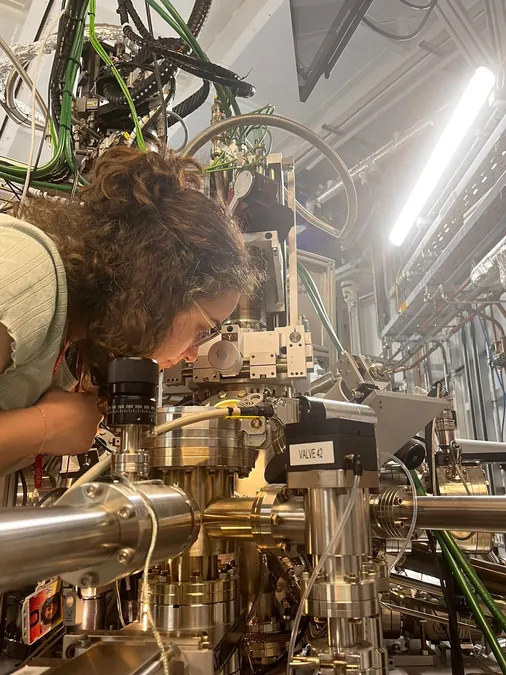
Revolutionary 'Twisted' 2D Materials Uncover Surprising Electronic Properties That Challenge Science’s Expectations!
2024-12-30
Author: Emily
Introduction
In an exciting development for the future of electronics, researchers have turned their attention to intriguing 2D materials—atomic-thin sheets that promise groundbreaking electronic properties. A fresh study led by Antonija Grubišić-Čabo from the University of Groningen has unveiled unexpected behaviors in these materials, specifically focusing on a two-layered structure of tungsten disulfide, which has left scientists scratching their heads.
Research Publication
Published in the esteemed journal *Physical Review Materials*, the research team, which includes experts from Poland, Germany, France, and Italy, aimed to unravel the mysteries of how these 2D materials interact when stacked at precise angles. Theoretical models proposed that stacking two sheets at an angle of 4.4 degrees should elicit a synchronized, collective electron behavior. This phenomenon was anticipated to give rise to new effects like superconductivity, a state where electricity flows without resistance.
Unexpected Results
However, the experimental results revealed a twist—literally. As Giovanna Feraco, the study’s lead author, pointed out, the anticipated collective electron motion was not observed. Instead, the team discovered that the interaction between the atomic layers led to unexpected configurations, where the bilayer arrangement tended to relax into larger, untwisted regions.
Significance of Findings
"What we found is that rather than demonstrating cooperative electronic behavior, the material shows a preference for reverting to a more stable, lower-energy state,” Feraco explains. This is a significant deviation from standard predictions, highlighting a complex interplay of forces at work within the bilayer structure.
Implications for Future Electronics
These findings don’t just challenge existing theoretical models; they also hold great promise for understanding and tailoring the electronic properties of 2D materials further. The capability to manipulate these structures more effectively could pave the way for advancements in a myriad of electronic applications, including ultra-efficient transistors, sensors, and potentially revolutionary quantum computing technologies.
Conclusion
So, what does this mean for the future of electronics? With a deeper comprehension of how these materials behave, scientists are now better equipped to harness their unique properties—ushering in a new era of high-performance, energy-efficient technologies that could redefine our digital landscape. Keep your eyes peeled, as the implications of this research could fuel the next big wave of innovation in electronics!









 Brasil (PT)
Brasil (PT)
 Canada (EN)
Canada (EN)
 Chile (ES)
Chile (ES)
 Česko (CS)
Česko (CS)
 대한민국 (KO)
대한민국 (KO)
 España (ES)
España (ES)
 France (FR)
France (FR)
 Hong Kong (EN)
Hong Kong (EN)
 Italia (IT)
Italia (IT)
 日本 (JA)
日本 (JA)
 Magyarország (HU)
Magyarország (HU)
 Norge (NO)
Norge (NO)
 Polska (PL)
Polska (PL)
 Schweiz (DE)
Schweiz (DE)
 Singapore (EN)
Singapore (EN)
 Sverige (SV)
Sverige (SV)
 Suomi (FI)
Suomi (FI)
 Türkiye (TR)
Türkiye (TR)
 الإمارات العربية المتحدة (AR)
الإمارات العربية المتحدة (AR)